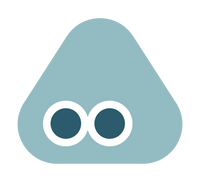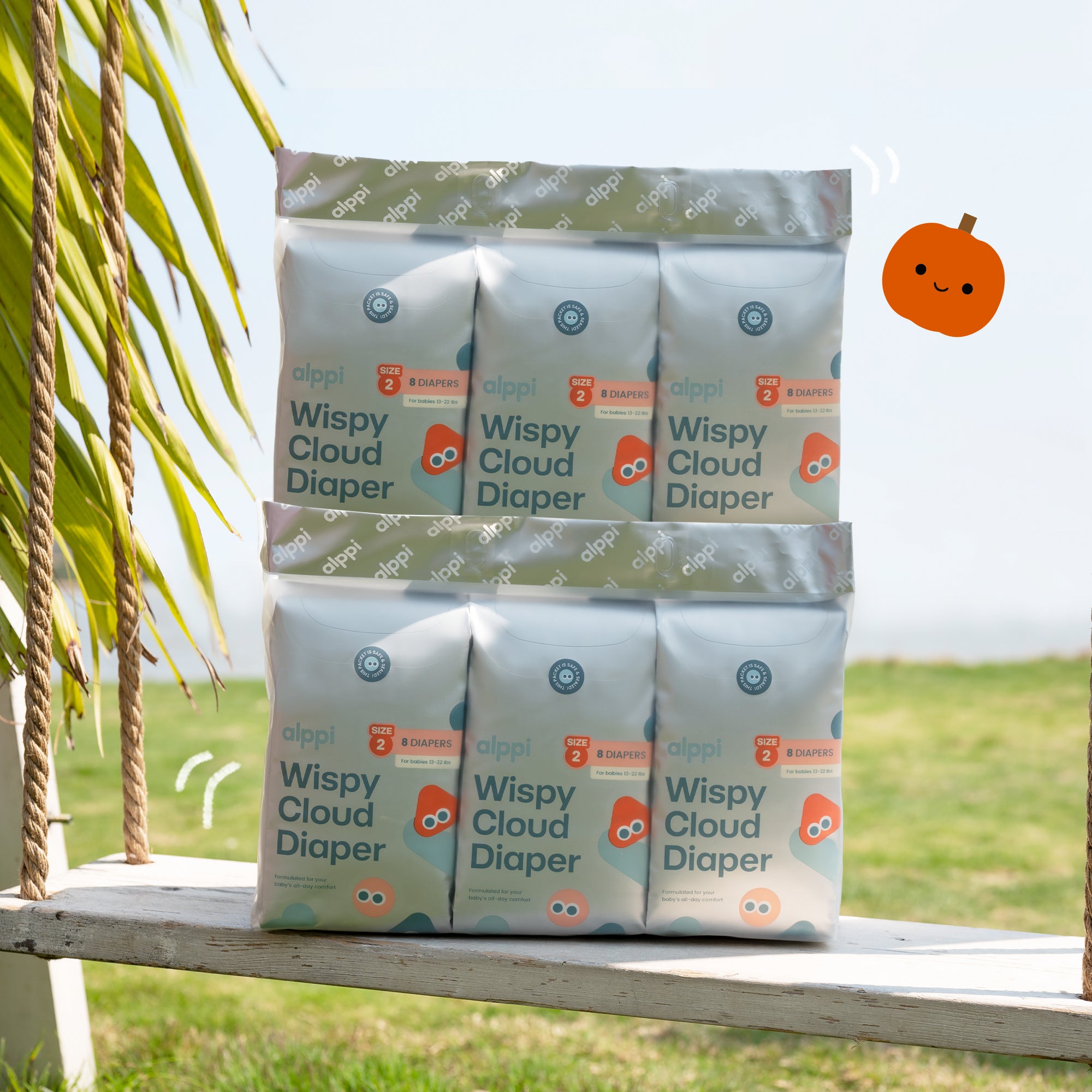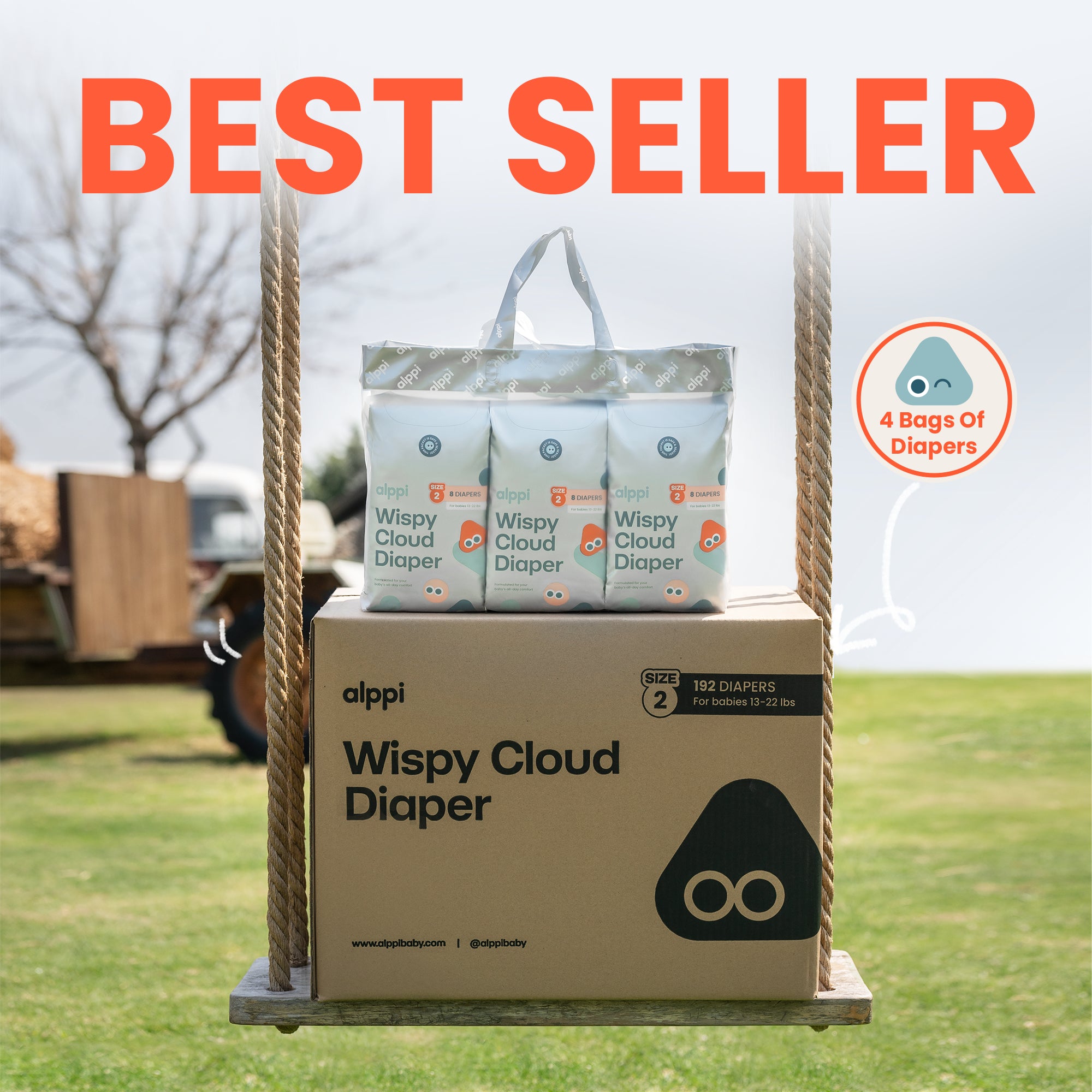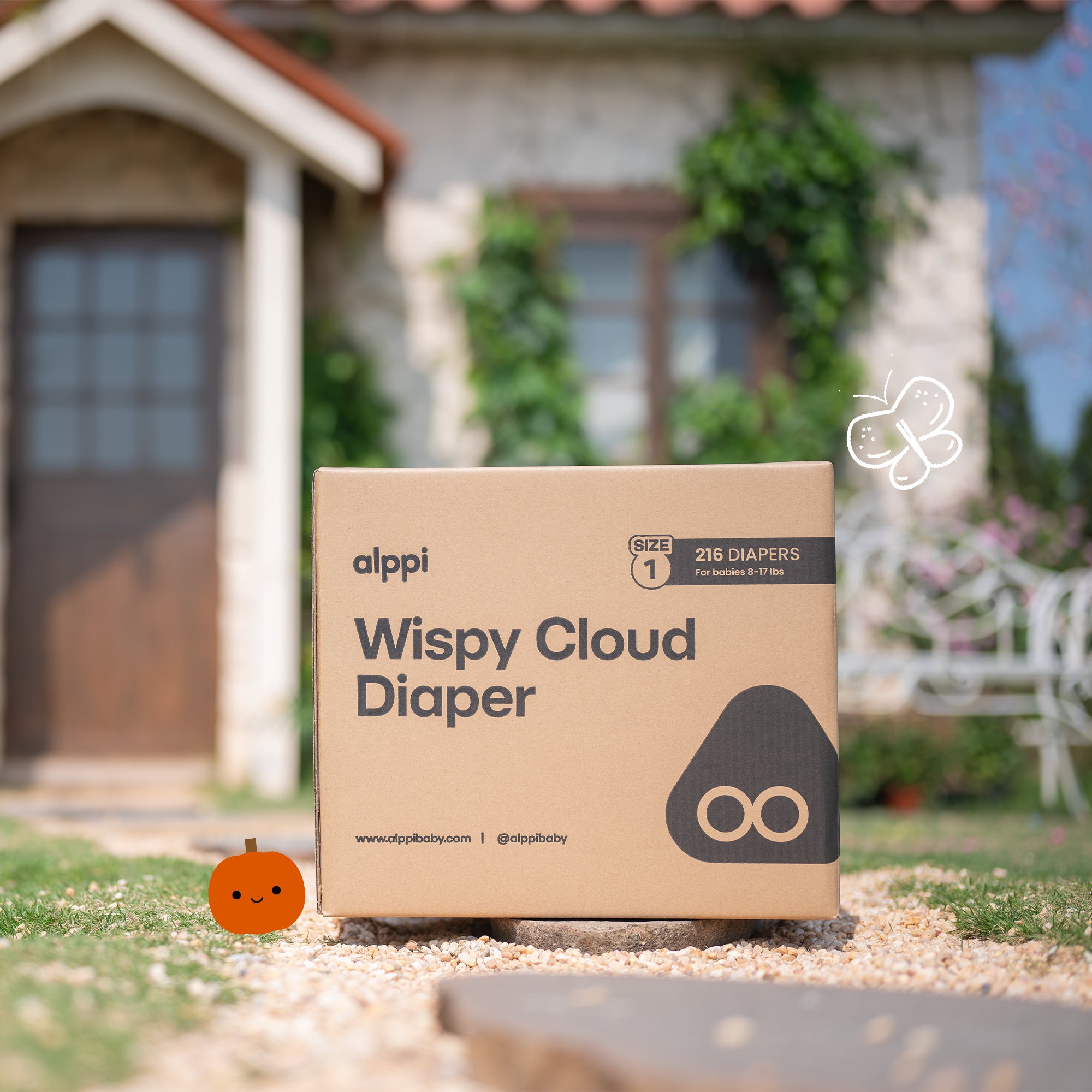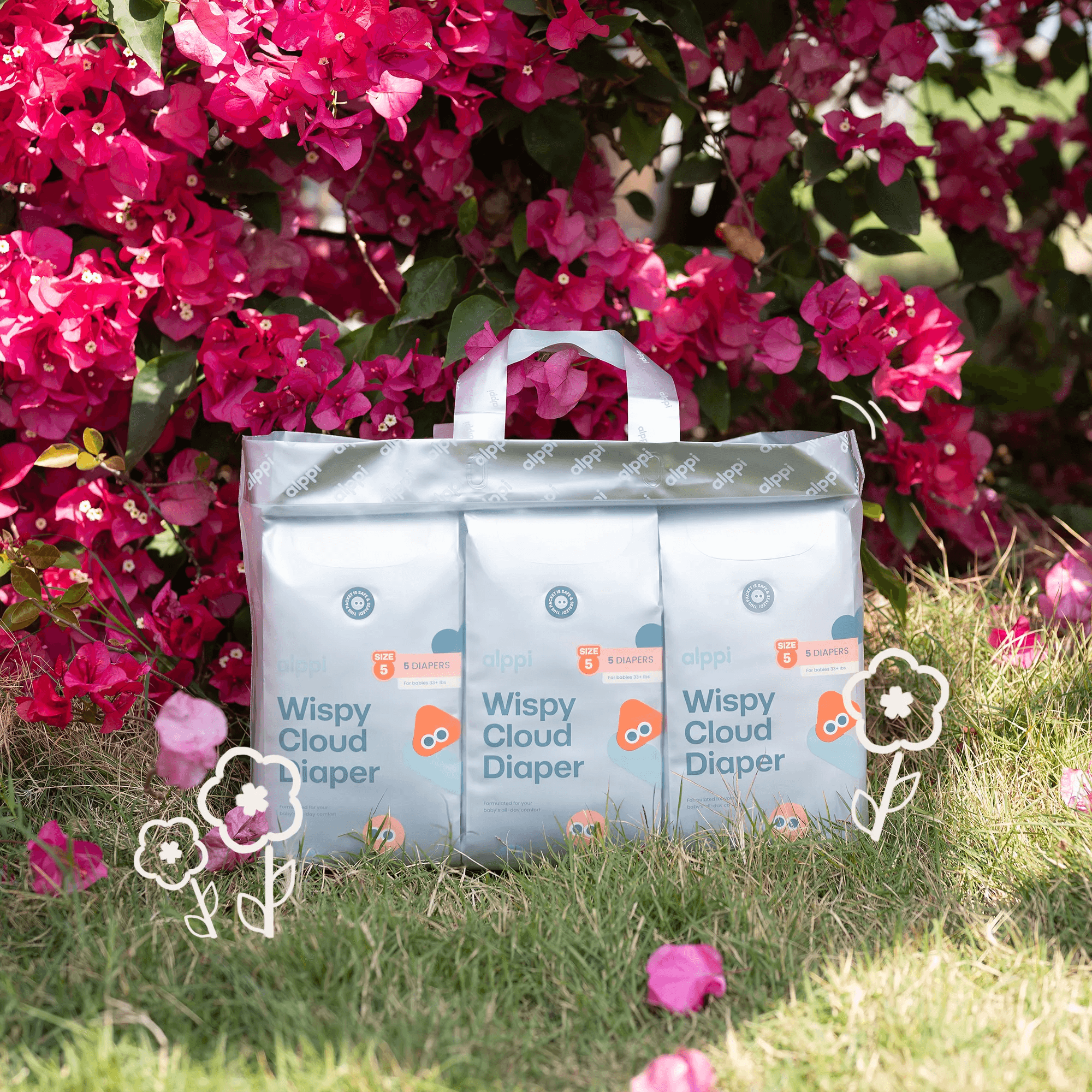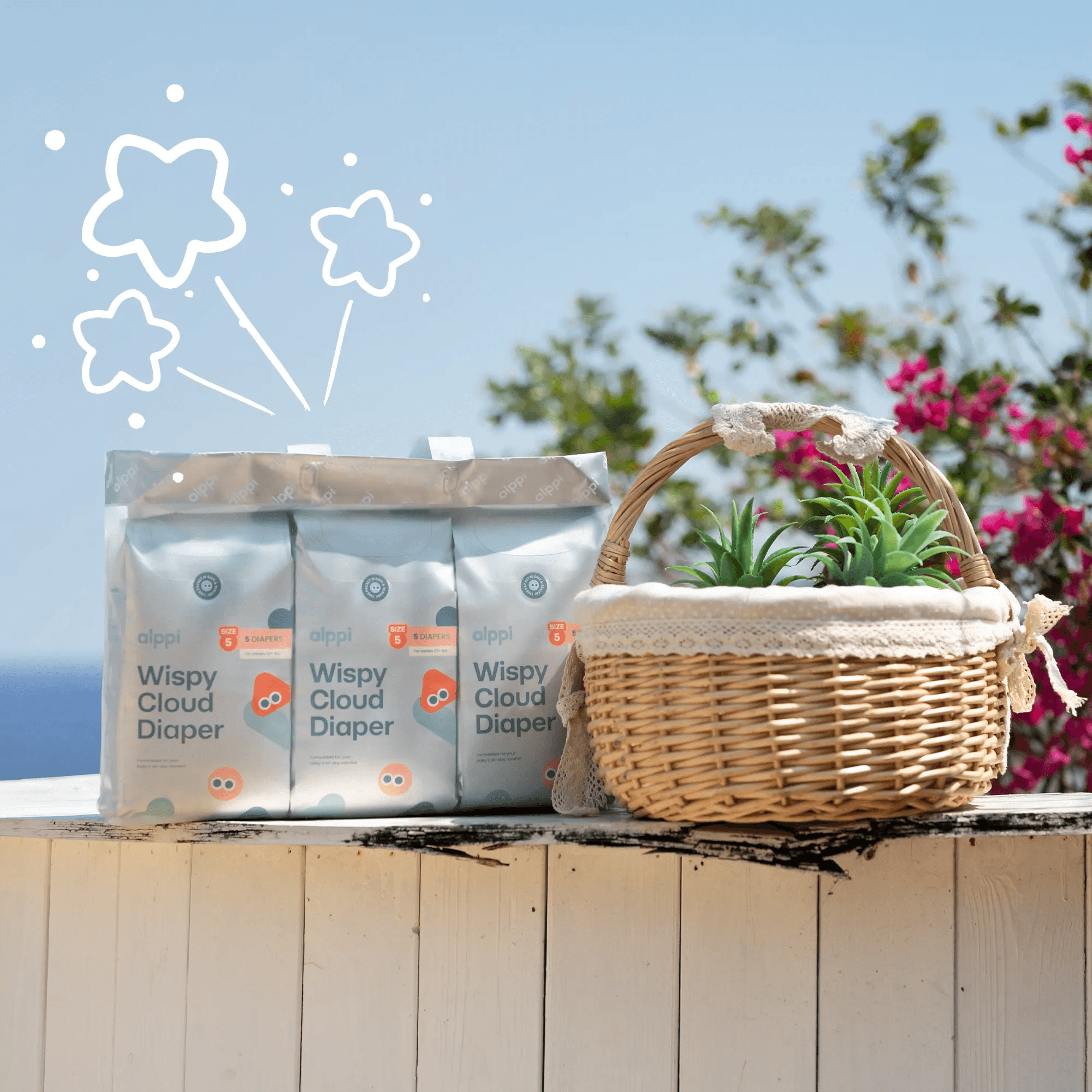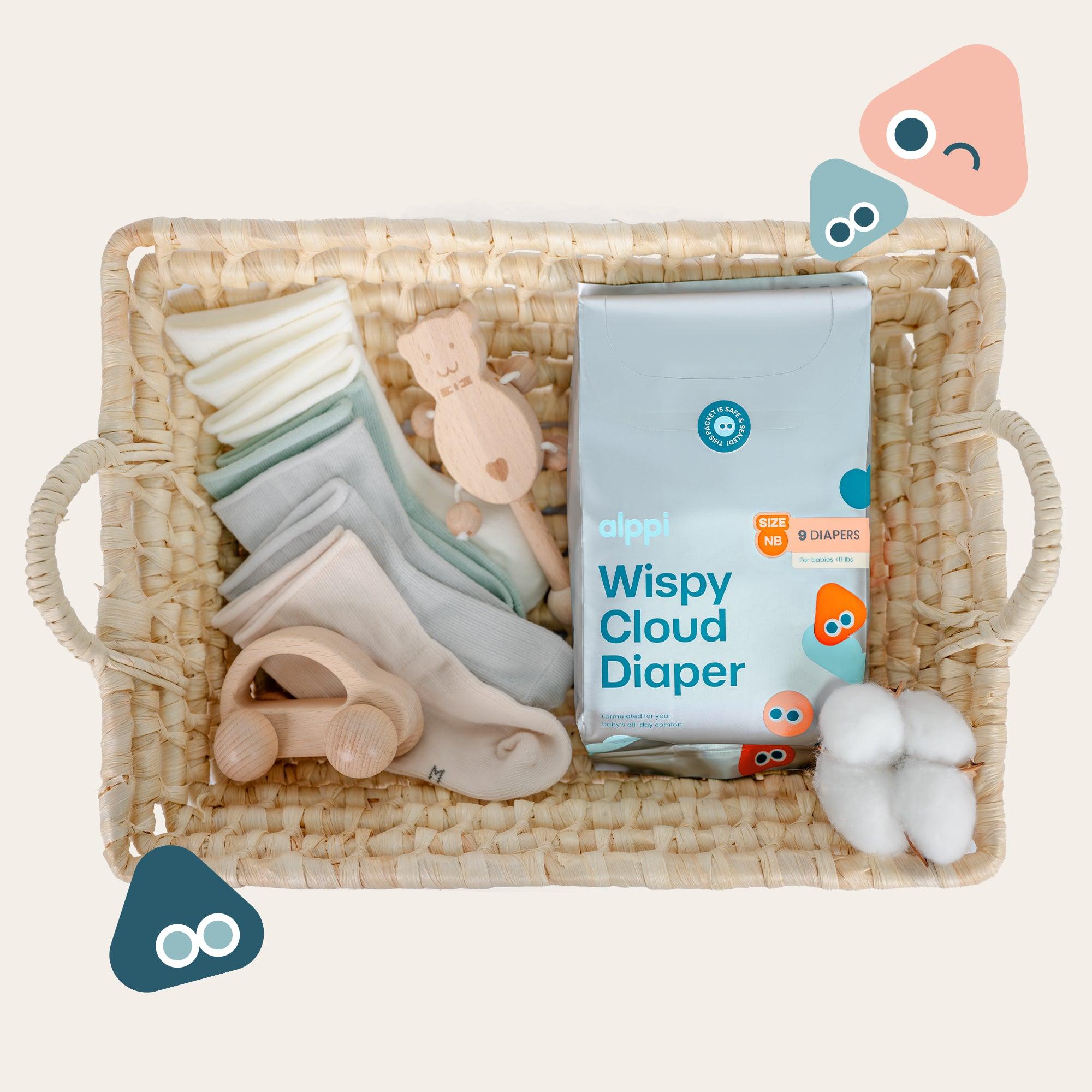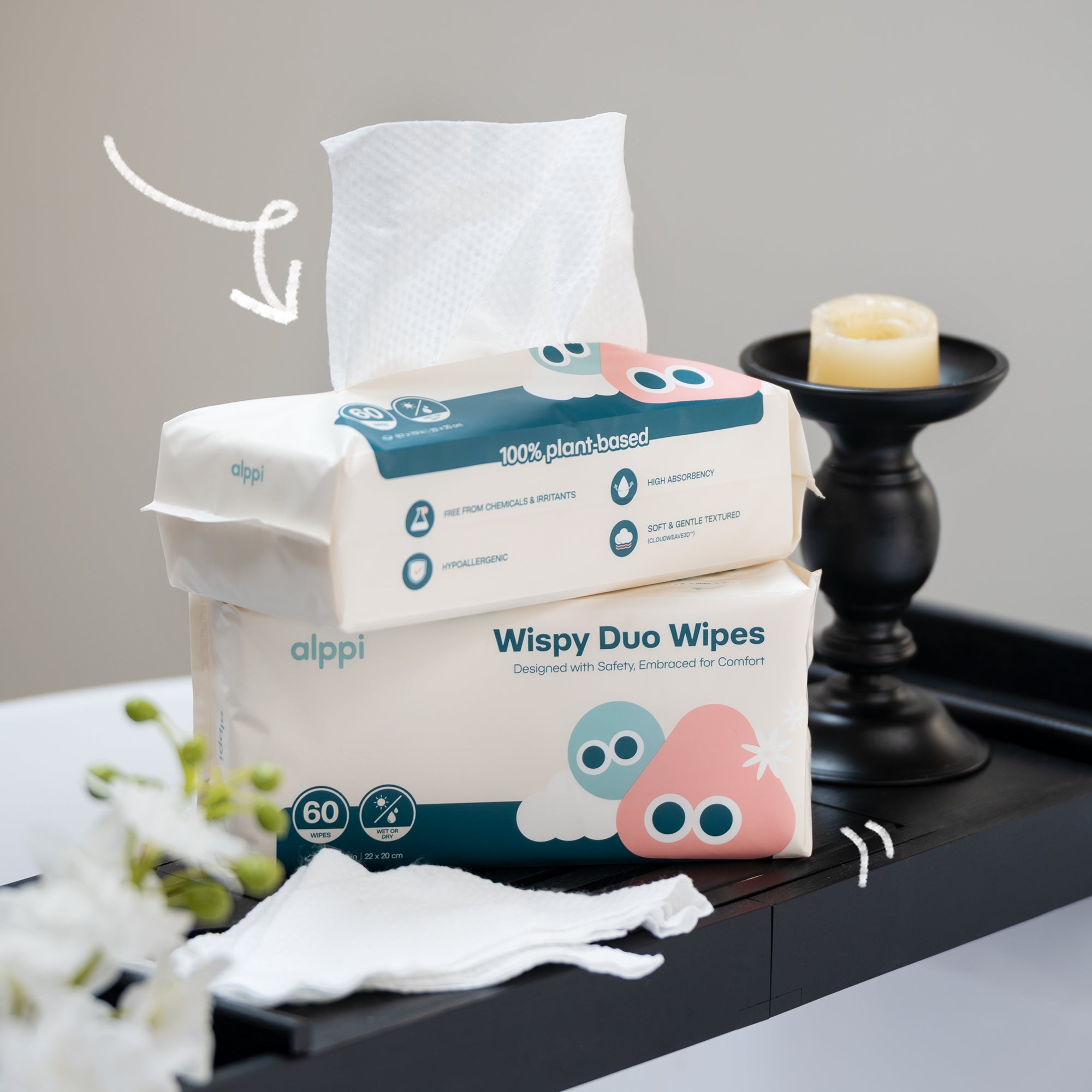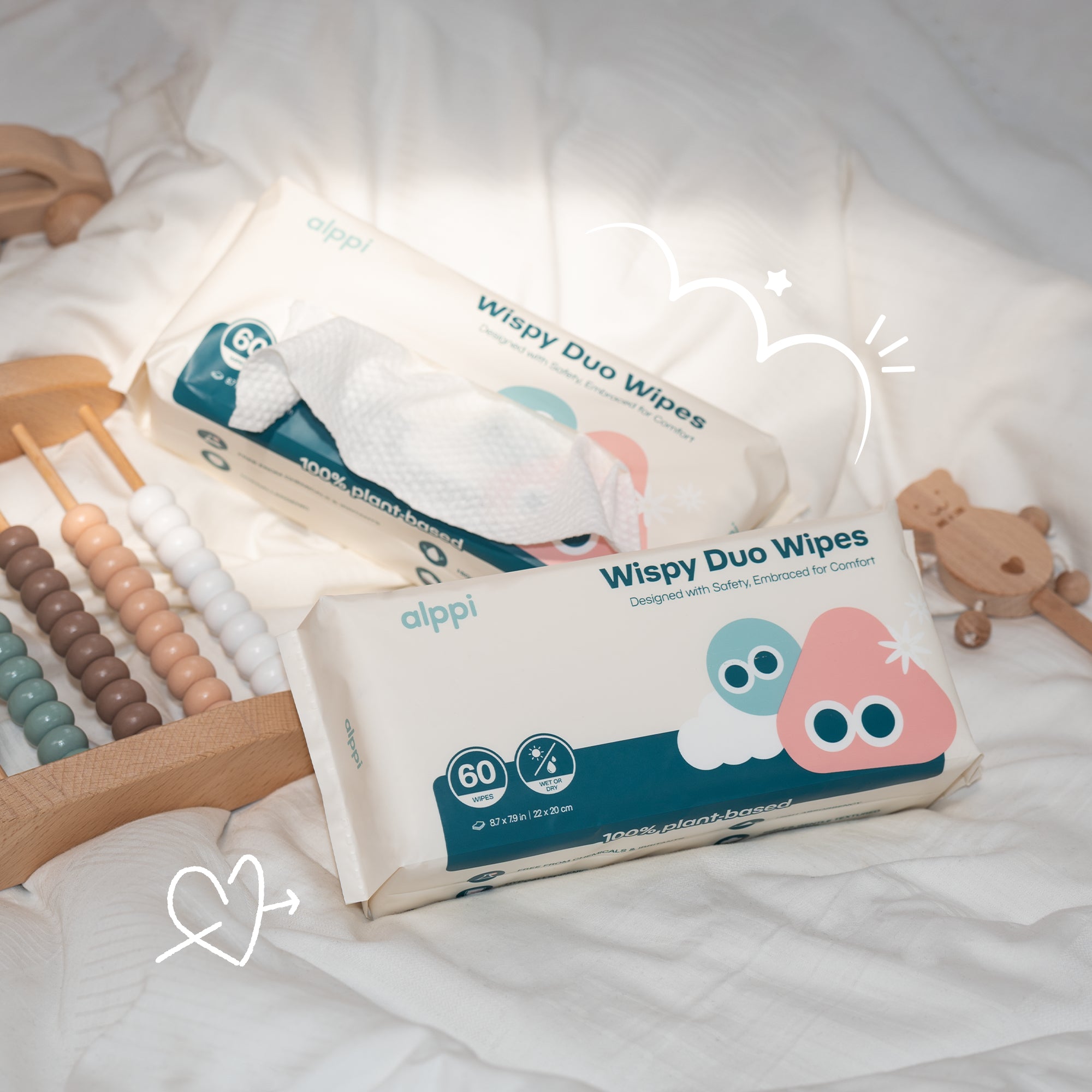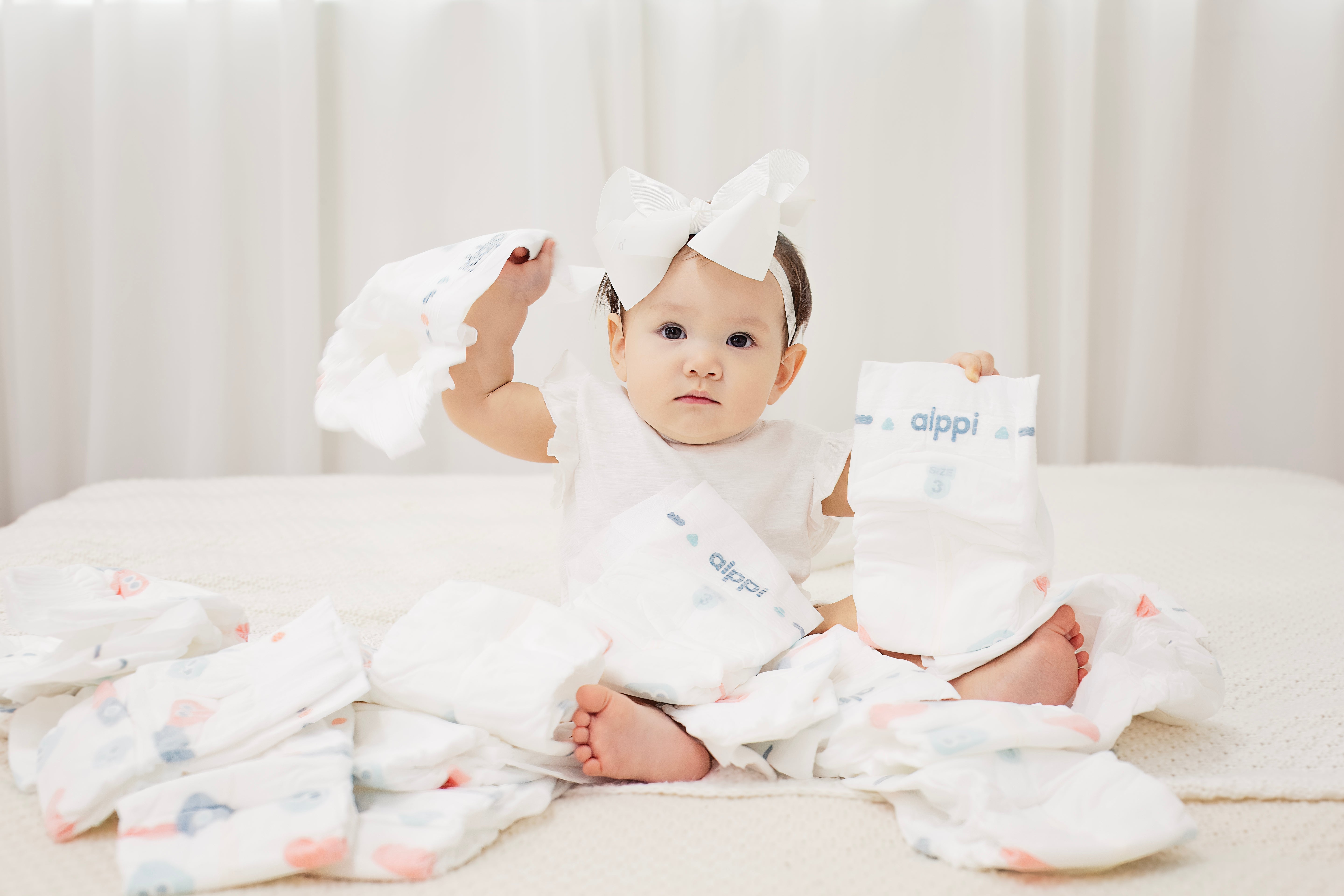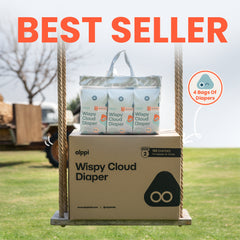Learning how to wipe a baby girl properly is essential for preventing infections and keeping your little one comfortable during diaper changes. The female anatomy requires gentle, careful cleaning to avoid irritation and urinary tract infections.
This guide walks you through the safe, step-by-step process that pediatricians recommend. From the right wiping direction to choosing gentle products, we'll cover everything you need to know.
With the right technique and a little practice, diaper changes will become second nature—giving you confidence that you're protecting your baby's health and comfort every time.
Keep your baby girl clean and comfortable with our gentle baby wipes—fragrance-free and perfect for sensitive skin. Save 15% through October 31, 2025!
Step-By-Step Guide To Wiping Baby Girls

Front to back, every time. That’s the core of safe cleaning. Be gentle, get into all those little folds, and pick the right method for whatever mess you’re facing.
Proper Front-To-Back Technique
Start at the front of your baby’s genital area. Place the wipe right at the top near the pubic area.
Pull the wipe in one smooth motion toward the back. Never go back to front—that can move bacteria where you really don’t want it.
Grab a fresh wipe for each pass. Don’t try to refold and reuse the same one.
Hold your baby’s legs gently with your other hand and lift them just enough to reach everywhere you need to.
Make 2-3 passes with separate wipes if things are messy. The first gets most of it, the next ones finish the job.
Go easy on the pressure. Baby girls have sensitive skin that can get irritated or even tear if you scrub too hard.
Toss each used wipe right away. Don’t let dirty wipes touch your clean supplies.
Cleaning Around The Vulva And Labia
The vulva has lots of folds where stuff can hide. Pay special attention to the labia majora and labia minora.
Gently separate the outer labia with your fingers. Use a fresh wipe to clean between the folds.
Be extra gentle around the clitoris. That area is super sensitive and doesn’t need much touching.
Watch for white or yellow buildup called smegma. It’s normal and collects in the folds—just wipe it away gently with a damp cloth or wipe.
Check where the thighs meet the genitals. Mess often gets stuck in those creases.
Don’t wipe inside the vaginal opening. The vagina cleans itself, and wipes inside can cause problems.
Pat the area dry if it’s damp after cleaning. Leaving moisture can lead to diaper rash.
When To Use Water Vs. Wipes
Use plain water if your baby has sensitive skin or frequent rashes. Water is the gentlest thing you can use day-to-day.
Wipes come in handy for solid messes or when you’re out. Stick to fragrance-free and alcohol-free ones.
Wet a soft cloth with warm water if your baby’s skin looks irritated. It’s often better than commercial wipes when there’s a rash.
Minimal-ingredient wipes are best for routine changes. The fewer chemicals, the better.
If you notice redness or bumps, try switching to just water. Some babies react to ingredients in wipes.
Keep both options nearby when you change diapers. Sometimes wipes are just easier; other times, water is the way to go.
For really messy diapers, you might start with wipes and then finish with water for a final clean.
Protect your baby girl's sensitive skin with our clean diapers—made without chlorine, fragrances, or harsh chemicals for gentle, everyday care.
Common Mistakes To Avoid

Everyone slips up sometimes, but some cleaning mistakes can actually make things worse for your baby girl. The wrong products or habits can lead to rashes, infections, and a lot of discomfort.
Over-Cleaning And Harsh Products
It’s tempting to think more cleaning is always better, but that’s not the case. Baby girls’ skin is delicate and gets irritated easily.
Skip these harsh products:
- Scented wipes
- Wipes with alcohol
- Adult wet wipes
- Antibacterial wipes full of chemicals
Go for gentle, hypoallergenic wipes. Fragrance-free and alcohol-free is the way to go.
Don’t scrub—just use gentle, light strokes to get things clean.
Cleaning too often can actually strip away the natural oils that protect your baby’s skin. Changing diapers every 2-3 hours is usually enough.
Water-based wipes are great for daily use. Save soap for bath time.
Wrong Wiping Direction
Wiping the wrong way is a big one. Always start at the front and move to the back—never the other way around.
Why it matters:
- Keeps bacteria away from the urinary area
- Lowers the risk of UTIs
- Helps protect those sensitive spots
Start near the belly button and swipe toward the back. Don’t go back and forth with one wipe.
Every stroke gets a new wipe. That way, you’re not spreading germs around.
Some folks wipe side to side, but that can push germs into folds. Stick to front-to-back every single time.
Missing Important Areas
Baby girls have lots of little folds where mess and moisture can hide. You’ve got to get in there—gently, of course.
Easy-to-miss spots:
- Between the labia (outer lips)
- Creases where the legs meet the body
- Around the bottom
- Upper thigh folds
Gently separate the outer folds to clean inside. Skip cleaning inside the inner lips—the body handles that on its own.
Check the areas where the diaper touches most. Those spots get extra moisture and need a little more attention.
Look out for leftover wipe bits or cream buildup. Leaving those behind can irritate the skin.
Sometimes wrapping a wipe around your finger helps you clean tiny creases more easily than just using the wipe flat.
Signs Of Problems And When To Call The Doctor
Knowing what’s normal and what’s not can save you a lot of worry. Keep an eye out for changes in your baby girl’s skin or discharge, and don’t hesitate to call the doctor if something seems off.
Recognizing Diaper Rash And Irritation
Mild diaper rash looks like light pink or reddish skin in the diaper area. Usually, it clears up if you change diapers often and use a barrier cream.
More serious rash signs:
- Bright red, raised bumps or welts
- Open sores or bleeding
- Pus-filled bumps or blisters
- Rash that spreads beyond the diaper area
- Purple or dark patches
If the rash isn’t better after 2-3 days of treatment, give your doctor a call. If your baby has a rash and a fever, get help right away.
Fungal infections show up as bright red patches with tiny red bumps around the edges. These need prescription antifungal cream.
If your baby cries during diaper changes or when you touch the area, or just seems extra fussy, pain could be the reason.
UTI Warning Signs In Baby Girls
Urinary tract infections are more common in baby girls because of their anatomy—the urethra is shorter and closer to the anus.
Watch for these UTI symptoms:
- Fever without a runny nose or other cold symptoms
- Strong-smelling or cloudy urine
- Crying or fussiness during peeing
- Peeing more often than usual
- Not eating well or losing their appetite
- Sometimes, the only signs are behavioral—maybe your baby is crankier than usual or isn’t sleeping well.
Serious symptoms—call the doctor right away:
- High fever over 101°F (38.3°C)
- Vomiting or refusing to eat
- Extreme fussiness or lethargy
- Signs of dehydration
If you suspect a UTI, call your pediatrician that day. Untreated infections can get serious fast.
Normal Vs. Concerning Discharge
Normal discharge is usually clear or milky white. It happens because of hormones passed from mom during pregnancy.
A little blood-tinged discharge in the first few days after birth is normal too. It’s called pseudomenstruation and goes away on its own.
Signs to watch for:
- Yellow or green discharge with a strong smell
- Lots of thick, cottage cheese-like discharge
- Red, swollen skin around the vagina with discharge
- Discharge that doesn’t stop after the first week
Call your doctor if you see:
- Any foul-smelling discharge
- Discharge plus fever or fussiness
- Bright red bleeding after the first week
- Pain when you clean the area
Keep things clean and dry. Skip soaps or lotions unless your doctor specifically says to use them.
Never run out of gentle protection with our diaper delivery subscription—convenient, flexible deliveries so you're always stocked with safe, clean diapers.
Conclusion: How To Wipe a Baby Girl
Proper wiping technique is one of the most important skills for keeping your baby girl healthy and comfortable. With gentle, front-to-back cleaning and the right products, you can prevent infections and irritation while making diaper changes easier for both of you.
Remember to trust your instincts and watch for any signs of discomfort or unusual symptoms. Every baby is different, so adjust your routine as needed while sticking to these safe cleaning basics.
Looking for diapers that work best with sensitive skin? Check out our guide on the best diapers for sensitive skin to find gentle options that protect delicate areas.
Frequently Asked Questions
New parents have a lot of questions about wiping baby girls. Here are some honest answers to the stuff people really wonder about—cleaning, hygiene, and what’s normal.
How do I clean my baby girl's private part?
Wipe from front to back to keep bacteria away from sensitive areas. Use soft, fragrance-free wipes or a damp cloth with gentle motions. Always use a new wipe for each pass to avoid spreading germs.
How to wipe down a baby girl?
Remove the dirty diaper and use the clean front to wipe away most mess. Then, wipe front to back—clean the vaginal area first, then the bottom. Gently clean skin folds and pat dry before putting on a new diaper.
Are you supposed to wipe baby girls after they pee?
Yes, always wipe after your baby girl pees to remove leftover urine. This helps prevent irritation and diaper rash. A gentle front-to-back wipe is enough for wet diapers.
Why does my baby girl have white stuff in her private area?
White discharge in baby girls is normal and often just leftover vernix or mild newborn discharge. It’s caused by natural hormones and fades within weeks. Rinse gently with water—no scrubbing needed.
